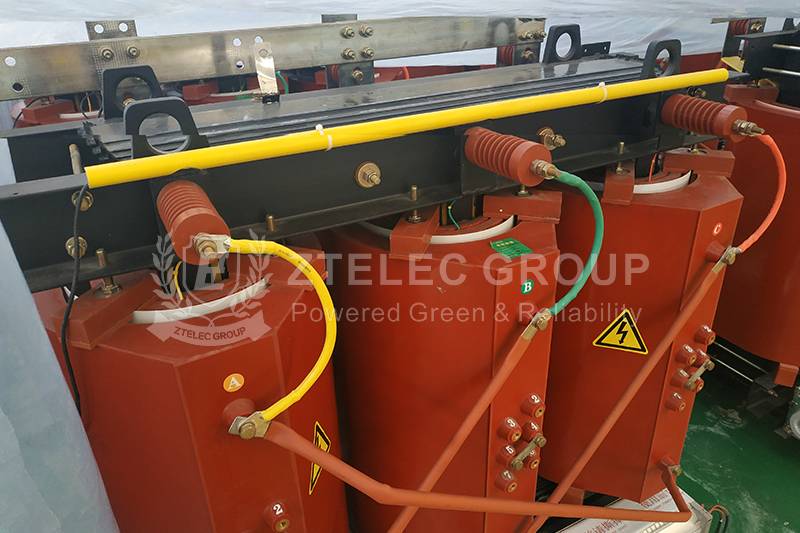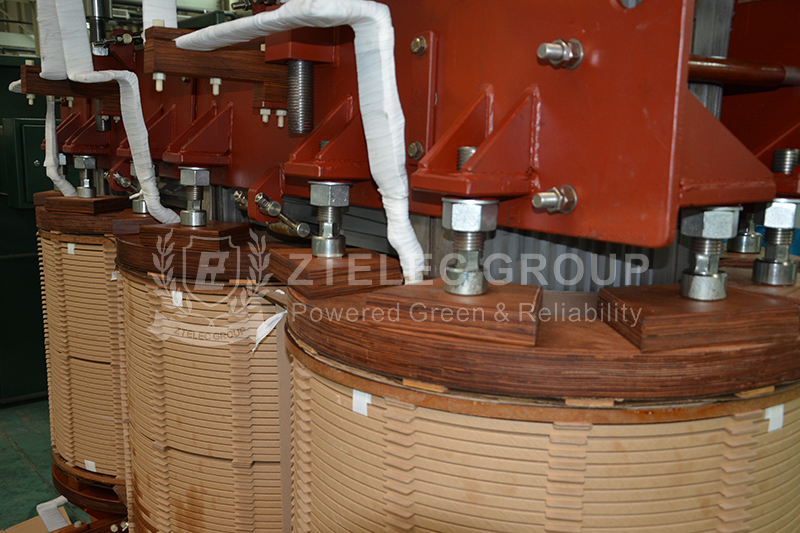How Does a Transformer Transform Voltage? In-Depth Guide to Voltage Conversion Principles
In modern power systems, transformers are essential equipment for efficient transmission and distribution of electric energy. From long-distance power transmission to industrial machinery operation and household electricity use, transformers play a vital role. Based on the principle of electromagnetic induction, transformers accurately increase or decrease voltage, ensuring the stable operation of the power grid.

dry-type distribution transformer
Core Principles of Transformers
The fundamental working principle of a transformer is electromagnetic induction. When alternating current flows through a coil (primary coil), it creates a changing magnetic field that induces voltage in another coil (secondary coil). The main components of a transformer are the primary coil, secondary coil, and the iron core.
Magnetic Field Coupling
Alternating current in the primary coil generates an alternating magnetic field. The iron core, made of silicon steel sheets with high magnetic permeability, guides this magnetic flux efficiently, forming a closed magnetic circuit. The secondary coil, wrapped tightly around the iron core, receives this magnetic flux with minimal loss, inducing voltage according to Faraday's law of electromagnetic induction. This process is magnetic coupling.
Voltage and Turns Ratio
The voltage ratio between primary and secondary coils is proportional to their turns ratio:
- If the secondary coil has more turns than the primary coil, the transformer steps up the voltage.
- If the secondary coil has fewer turns, it steps down the voltage.
For example, if the primary coil has 100 turns and the secondary coil has 200 turns, the secondary voltage will be twice the primary voltage. Conversely, if the secondary coil has 50 turns, the voltage will be half.
Transformer Working Process
Alternating Current Creates Magnetic Field: AC in the primary coil produces a periodically changing magnetic field.
Magnetic Field Induces Secondary Voltage: The changing magnetic flux in the iron core induces voltage in the secondary coil proportional to the turns ratio.
Power Conservation and Current Relation: Ideally, input power equals output power. High voltage in the coil with more turns corresponds to lower current, and vice versa. This reduces transmission line current and losses.

Practical Applications of Transformers
Voltage Regulation in Power Systems
Power plants generate electricity at relatively low voltage. Step-up transformers raise voltage for efficient long-distance transmission, reducing current and losses. Near consumption points, multi-stage step-down transformers reduce voltage to standard industrial (380V) and residential (220V) levels.
Power Adapters for Industrial Equipment
Industrial machinery often requires specific voltage levels. Transformers supply stable, interference-free power needed by precision devices like CNC machines and robots, ensuring accuracy and reliable operation by isolating electrical noise.
Voltage Conversion in Special Scenarios
In renewable energy, wind turbines output around 690V, but control systems may require 380V; transformers convert voltage accordingly. In ports, shore power systems provide 690V to docked ships, while onboard equipment needs 380V, requiring transformers to ensure clean and green power supply.
- more+releated article
- 2025-10-21Application of K Factor Transformer
- 2025-10-21Detailed explanation about transformer model w
- 2025-10-2010kV Oil-Immersed Transformer Safety: Lightnin
- 2025-10-20What are The Advantages of Phenolic Cotton Clo
- 2025-10-17Are Three-Phase Isolation Dry-Type Transformer
- 2025-10-17G10 Epoxy Sheet: Choosing the Right Specificat
- 2025-10-1610kV Oil-Immersed Transformer Operation Inspec
- 2025-10-163240-B Epoxy Phenolic Glass Fiber Cloth Lamina
- 2025-10-15G10 Epoxy Sheet: The Preferred Insulation Mate
- 2025-10-15Analysis of Energy-Saving and Noise Control Te





